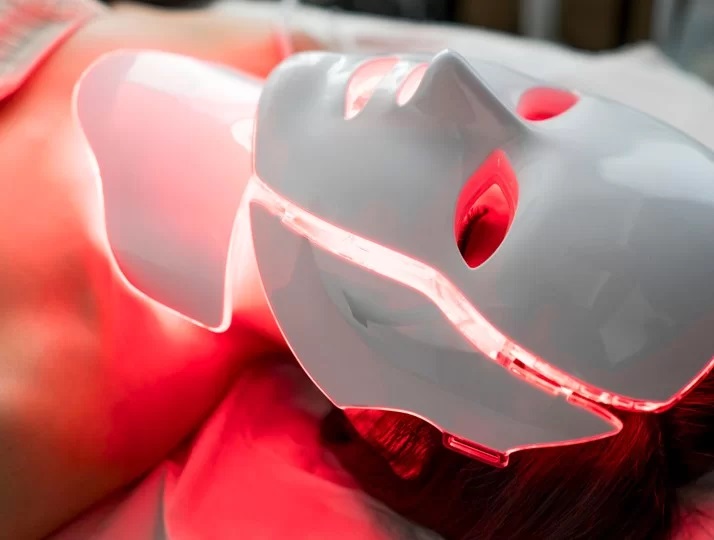Reducing the appearance of fine lines, scars, redness, and acne using low-wavelength red light is the purported goal of red light therapy (RLT). It’s also supposed to help with a variety of other health issues.
There is now a great deal of ongoing research, the publishing of tiny studies, and extensive debate online concerning the usefulness of red light therapy for a wide range of health applications. Studies have shown that red light therapy may be helpful, although its full potential has not yet been established.
How Does It Work?
It is believed that the mitochondria, the “power plant,” in your cells respond to red light therapy. The ability of other cells to perform their functions, such as skin repair, new cell growth, and rejuvenation, is improved when they have access to more energy. To be more specific, there are certain wavelengths of light that can be absorbed by certain cells, stimulating them to multiply and divide.
Collagen production is increased by red light therapy, which could improve skin health and appearance by adding firmness, resilience, and resilience to the skin. Collagen synthesis (by fibroblasts) is also boosted. Skin is mostly composed of collagen, a kind of connective tissue.
Resonant frequency therapy (RLT) also improves tissue blood flow. RLT can also aid in reducing cellular inflammation.
Does It Effective?
To date, it has been generally agreed upon by experts that it is unclear whether or not RLT is effective for its many purported applications. Most agree that the published studies have shown promise for some conditions but that more research is needed.
An increasing number of people are interested in a treatment called red light therapy, which is still in its early stages of development. However, as of now, most applications lack sufficient proof.
A randomised, controlled trial is the most reliable method of testing a product’s efficacy. This means that the same number of people with a given set of characteristics are randomly assigned to receive either the study treatment or a placebo. The effectiveness of one treatment was compared to another in some studies. The emergent therapy may then be compared against either no treatment at all or to the “current standard” treatment in order to draw meaningful conclusions.
Many of the published trials utilising RLT comprised just a small number of individuals, didn’t include a placebo group, weren’t done in humans or were confined to cell tissue itself. Scientists generally agree that the preliminary findings are encouraging, but that bigger, higher-quality investigations are required.
Is It Safe?
It would seem that red light therapy is risk-free and has no known negative effects when used in the short term and as prescribed. This procedure is safe, noninvasive, and mild compared to other skin care options. Sunlight and tanning salons both emit ultraviolet (UV) rays, which have been linked to cancer.
On the other hand, skin and eye damage (if unprotected) might occur if products are used improperly, such as more often or in a different way than recommended. Red light treatment devices have not been studied long-term enough to determine whether they are safe.
Going to a dermatologist or other professionally trained cosmetic specialist is your safest bet. A dermatologist can confirm the diagnosis you have made about your skin issue and advise you on the best course of treatment, whether that be red light therapy or something else.
The Bottom Line
Red light therapy has been suggested as a treatment for various common skin problems. It’s a relatively new treatment option, but early results seem promising. Consult your doctor or dermatologist if you’re thinking about trying RLT therapy.
A dermatologist will inspect your skin and confirm a diagnosis. The two of you will then collaborate to choose the best course of action for achieving your goal. Red light therapy is one possible treatment method. If you’re interested in a certain therapy but aren’t sure if it will work for your skin condition or if it’s safe and effective, don’t be afraid to ask your doctor about alternatives.
